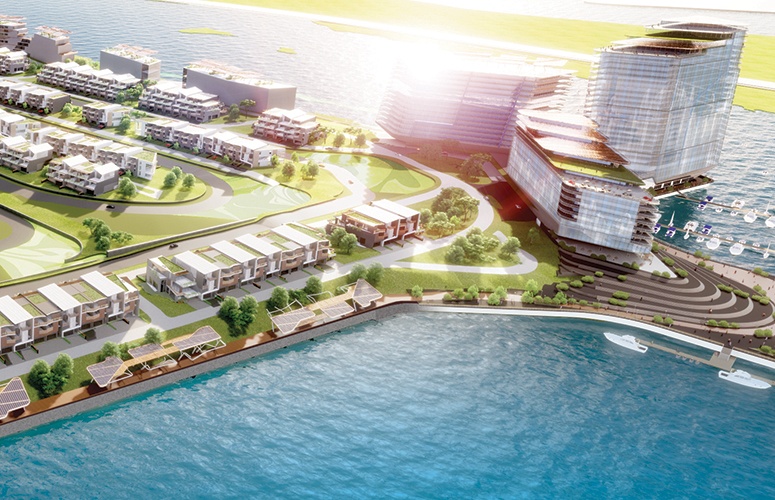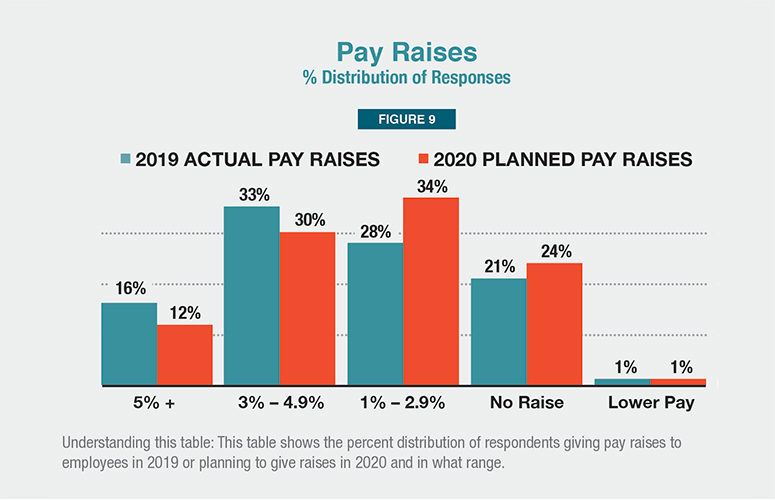
South Jersey: A Climate for Change
Already with so much to offer, Southern New Jersey is proving itself a leader in the new economy.
By Larry Feld, Contributing Writer On Sep 12, 2023From tourism and agriculture to energy, education, and transformational technologies in aviation, South Jersey is embracing change to drive its economic future, and that’s a good thing for everyone. As the impact of global warming threatens the region, leaders are pivoting to seek economic growth from these challenges.
Energy
Energy production and distribution are critical for driving economic prosperity in the region. “As customers conduct business from home and switch to electric vehicles, they are becoming more dependent on the electric grid and increasingly expect uninterrupted service,” notes Doug Mokoid, region president, Atlantic City Electric.
The utility is working on critical projects to strengthen infrastructure against more extreme weather, improve reliability and help communities become more resilient. Recent upgrades include; the Atlantic City/Brigantine Community Reliability Project, which modernized an existing substation and rebuilt two critical transmission lines between Atlantic City and Brigantine; the $79 million PowerAhead Grid Resiliency Initiative, modernizing energy infrastructure in areas that have experienced outages during severe storms; and modernizing the Cape May substation, which serves more than 7,100 customers in the Cape May area.
One of the most significant investments in clean energy generation is Ørsted’s Ocean Wind 1, the state’s first offshore wind generation project. The project was greenlighted in July by the US Department of Interior’s Bureau of Ocean Energy Management when it issued its Record of Decision, allowing permitting and construction to begin this fall. Located approximately 15 miles off the coast of southern New Jersey, Ocean Wind 1 will provide 1,100 MW, enough electricity to power 500,000 homes by 2025.
Offshore installation of the project’s monopile foundations and wind turbines is expected to begin in 2024. Monopiles for Ocean Wind 1 are being assembled at EEW American Offshore Structures’ facility at the Port of Paulsboro.
PSEG is providing the Ocean Wind 1 project with construction management, environmental permitting, and compliance services for the onshore substations and transmission cable installation scope. Meanwhile, Atlantic City Electric is upgrading the critical land-based infrastructure, installing 11 miles of transmission lines from the New Jersey Wind Port facility in Lower Alloways Creek Township to their Quinton substation in Salem.
Ørsted is also partnering with Rowan University to recruit New Jersey residents to participate in a paid training program to become wind turbine technicians. In addition, Atlantic Cape Community College’s Worthington Campus in Atlantic City has established the Wind Training Center for employees to earn the required training certificate.
This past July, the New Jersey Economic Development Authority (NJEDA) announced it is entering into development and sublease agreements with Ørsted for the sublease of up to 34 acres of property at the New Jersey Wind Port. Ørsted will be the NJWP’s inaugural tenant and expects to create up to 200 jobs over its lease term.
Aviation
Developments are also afoot elsewhere: The aviation industry, very quietly is emerging as a key player in South Jersey’s economic future. Adjacent to the Atlantic City International Airport, the Federal Aviation Administration has established the William J. Hughes Technical Center (WJHTC), situated on a new 58-acre National Aerospace Research and Technology Park (NARTP) currently under development. Already employing about 5,000, the WJHTC serves as the final testing and approval site for all commercial aviation equipment.
The FAA is a development partner of the campus, along with the Atlantic County Economic Alliance. Already at full capacity, the first building, a 66,000-square-foot structure, is home to 13 aviation-oriented businesses, including NASA, defense contractor General Dynamics, and Woolpert, a maker of Unmanned Aerial Systems (UAS), as well as Archer Aviation, manufacturers of electric vertical craft. Groundbreaking has already begun on the second, 40,000-square-foot, $18 million building. Once completed, the campus will consist of seven buildings totaling 400,000 square feet of space.
Bader Field Reenvisioned
The former Atlantic City Municipal Airport is an abandoned 142 acres on the outskirts of town. However, according to Lauren Moore, executive director of the Atlantic County Economic Alliance, the city has granted DEEM Enterprises LLC a memorandum of understanding to permit the firm to begin planning and due diligence work for a massive $2.7 billion, net-zero carbon LEED Platinum community, known as Renaissance at Bader.
While it is still very early in planning, the proposed vision includes a 2.44-mile electric car Formula 1 racetrack, which the developers describe as a “World-class motor course destination that embodies the speed, power, and design innovation of the motorsport universe.” Touting social responsibility and environmental stewardship as priorities, the company also plans to create a new community with retail, as well as hundreds of condo residences.
Power to the site, according to preliminary information, may come from a microgrid fueled by hydrogen power, and housing will draw from rooftop solar energy. There are some environmental challenges on the property due to it being a Federal EPA-designated brownfield site. Additionally, storm mitigation will require portions of the site to be raised from six feet to more than 30 feet. Plans may also include an educational facility, a hotel, and retail to support the community. If plans come to fruition, the project is expected to create up to 2,000 jobs, as well as provide much-needed housing and ratables for the city. Considering all that must be accomplished, the project may take up to a decade to complete.
Healthcare
Important investments are improving healthcare in South Jersey. In Atlantic City, the AtlantiCare Medical Center is nearing completion of a $125 million expansion to the hospital, including a new surgical facility. Also completed is a $1.8 million Pediatric Care Center, featuring a separate pediatric emergency treatment area – the first of its kind in the state.
Meanwhile, in Camden, a collaboration between The Coriell Institute for Medical Research, Rowan University, and Cooper University Health Care is underway. The $30 million investment partnership will create the Camden Cancer Research Center, which will work on treatments and cures for cancer.
Transportation
NJ TRANSIT announced in 2021 a major improvement project for the Walter Rand Transportation Center in Camden. “It will be a massive, state-of-the-art transportation center for Camden City; a resource for regional transit as well as residents,” predicts Christine M. Renna, president and CEO of the Chamber of Commerce Southern New Jersey.
Originally constructed in 1989, the new $275 million center – South Jersey’s largest – promises to be more customer-centric, including ADA-compliant access, additional parking, and integration with battery-powered electric buses.
Tourism
Tourism is big business in New Jersey, expected to reach $47.9 billion in 2023, according to the state’s Office of Legislative Services. If that holds true, it will effectively surpass pre-pandemic revenue highs. South Jersey beaches, attractions, and gaming represent a sizable chunk of that revenue and account for about 60% of the region’s economic output.
“You can’t talk about South Jersey without talking about hospitality and tourism,” notes Renna. “Economic trends show we will have another very successful season.” Despite the optimism, Renna notes that Atlantic City’s casino traffic has not yet recovered from pre-pandemic levels.
The nine Atlantic City casinos reported $3.3 billion in net revenues in 2022, representing a 9% increase over 2021, however, nearly all of the nine casinos reported continuing declines in profits. The positive gains in revenues are primarily the result of online gaming successes, a reality that Renna says needs to be addressed. “We need to focus on prioritizing foot traffic,” which translates to focusing more on non-gaming activities.
To that end, Showboat Hotel owner and Tower Investments CEO Bart Blatstein, this past July, opened the $100 million Island Waterpark, dubbed the world’s largest beachfront indoor waterpark. The 120,000-square-foot structure, located next to the Showboat Hotel, features six bars, 11 waterslides, and a 6,500-square-foot lazy river.
Next month, Dave and Busters will debut a 21,000-square-foot restaurant at the Tanger Outlets.
Agriculture
“There are hundreds of farms in South Jersey that are very profitable businesses; especially in Gloucester, Salem, and Cumberland counties,” explains Renna, adding that South Jersey is taking advantage of the untapped potential of the cannabis industry. In particular, the farming and manufacturing of both cannabis and hemp are on the rise.
South Jersey’s greatest economic strength may be its natural resources. As Moore puts it: “Our region has so much to offer – upscale entertainment, restaurants, golfing, wineries, breweries, as well as eco-tourism. And don’t forget, we are part of the Jersey Shore.”
To access more business news, visit NJB News Now.






